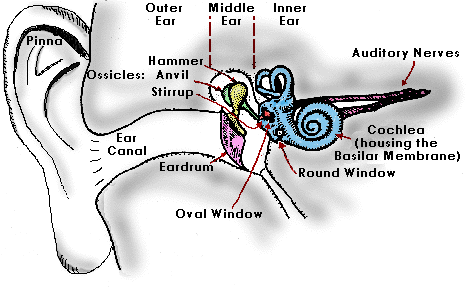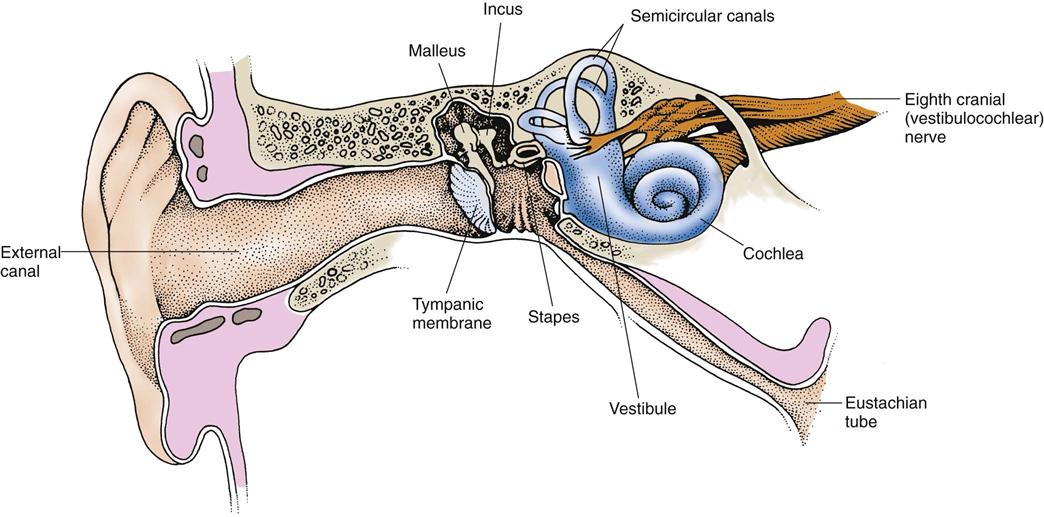

Some people also suffer severe dizziness because otoliths have become dislodged from their utriculus (e.g. When the hair cells send messages that are incongruent with what the eyes are seeing and our body is feeling, as may occur in a boat or aircraft during rough weather, motion sickness can result. This stimulates the hair cells to send impulses back to the brain. Whenever the head is moved, the fluid within the canals lags in its motion so that there is relative motion between the walls and the endolymph. There is a small chamber at one end of each canal containing hair cells. Motion of the body is detected in the three semicircular canals at the top of each inner ear, each one oriented in a different plane. The action potentials initiated in the hair cells are sent back to the brain. As the head is oriented in different directions, these ear stones or otoliths shift their position. On their inner surface are patches of hair cells to which are attached thousands of tiny spheres of calcium carbonate (CaCO 3). Just above the cochlea are two interconnecting chambers filled with endolymph, the sacculus and utriculus.

Many people, especially when young, can hear sounds with frequencies (pitches) from as low as 16 to as high as 20,000 hertz (cycles per second). These impulses travel back along the auditory nerve (the 8th cranial nerve) to the brain. Depolarization of the hair cell causes the release of a neurotransmitter (probably glutamate) at its basal surface and the initiation of nerve impulses in a sensory neuron that synapses with it. You should note that hair cells differ from most "excitable cells" (neurons and muscle fibers) in their use of potassium ions, not sodium ions, to depolarize the cell. The influx of K + from the endolymph depolarizes the cell.

This moves stereocilia at the tips of the hair cells against the tectorial membrane and open potassium channels in them. Vibrations of the endolymph cause vibrations of the basilar membrane. The hair cells are located between the basilar and tectorial membranes. Stereocilia are not built from the "9+2" arrangement of microtubules that are found in true cilia. The apical surface of the hair cells contains an array of stereocilia, which give the hair cells their name. It contains thousands of hair cells, which are the actual vibration receptors. The organ of Corti lies within the middle chamber of the cochlea.


 0 kommentar(er)
0 kommentar(er)
